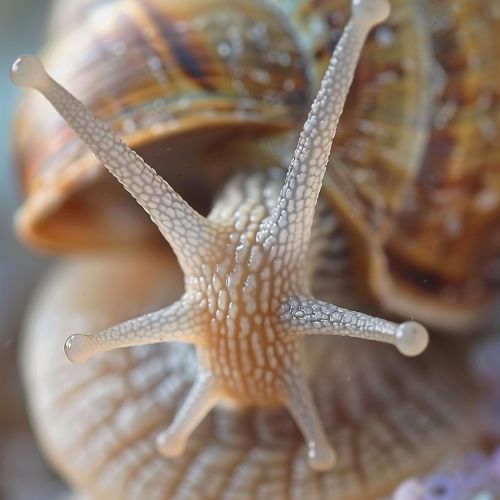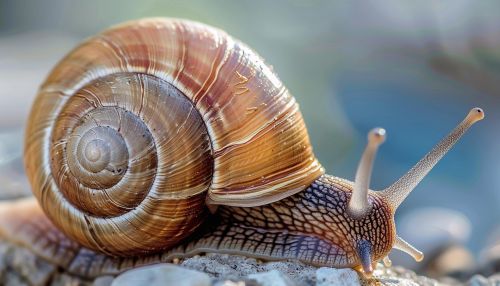Snail
Introduction
Snails are small invertebrates that belong to the class Gastropoda. They are characterized by their coiled shells, which they carry on their backs. Snails are found in a variety of habitats, from gardens and forests to deserts and the deep sea. They play a crucial role in the ecosystem by decomposing organic matter and providing food for other animals.
Anatomy and Physiology
Snails have a soft body that is protected by a hard shell. The shell is made of calcium carbonate and grows as the snail grows. The body of the snail is divided into three parts: the head, the foot, and the visceral mass. The head contains the snail's sensory organs, including tentacles that can detect light, chemicals, and touch. The foot is a muscular organ that the snail uses for locomotion. The visceral mass contains the snail's internal organs, including its heart, lungs, and digestive system.


Snails are hermaphrodites, meaning they have both male and female reproductive organs. They can reproduce both sexually and asexually. In sexual reproduction, two snails exchange sperm, and each snail lays eggs. In asexual reproduction, a single snail can produce offspring without mating.
Snails have a unique feeding mechanism. They have a specialized organ called the radula, which is covered with thousands of microscopic teeth. The snail uses the radula to scrape food particles off surfaces and into its mouth.
Classification
Snails are part of the class Gastropoda, which is the largest class of mollusks. Gastropods are characterized by their coiled shells and a body plan that involves torsion, or a twisting of the body. Snails can be divided into several groups based on their habitat and shell structure. Land snails, or terrestrial snails, live on land and breathe air. Sea snails, or marine snails, live in the ocean and breathe water. Freshwater snails live in lakes, rivers, and ponds.
Ecology and Behavior
Snails play an important role in the ecosystem. They are decomposers, breaking down dead plants and animals into nutrients that can be used by other organisms. Snails are also a food source for many animals, including birds, mammals, and other invertebrates.
Snails are primarily nocturnal, meaning they are most active at night. During the day, they often hide in damp, shady places to avoid drying out. Snails are also known for their slow movement. They move by contracting and extending their foot, leaving a trail of mucus behind them.
Conservation
Many species of snails are threatened by habitat loss, pollution, and overharvesting. Conservation efforts for snails often involve protecting their habitats and regulating the trade of snail products. Some species of snails are also bred in captivity as a conservation measure.
